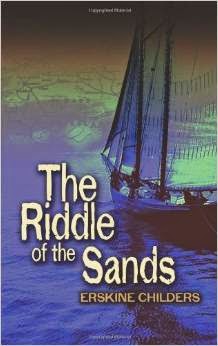Sailing the West Coast of Scotland
Sailing Scotland – the land of islands and lochs
By Daria Blackwell
 |
| Click on a photo to view the gallery full sized. |
Scotland, itself part of the United Kingdom island nation, has more than 790 offshore islands, divided into three main groups: The Hebrides, the Shetlands, and the Orkneys. Other islands can be found dotting the insides of Lochs and Firths along the mainland. Despite the total number, only 94 offshore islands in Scotland are populated, leaving the remainder in perpetual natural splendour. There’s usually a reason for that. The west coast of Scotland, like the west coast of Ireland, is relentlessly battered by the procession of low pressure systems. They form in North America and spin their way over to the coasts of these islands across the Atlantic. Picking the right time to go to Scotland is thus key. The year we sailed there, July was fantastic.
The Hebrides are further divided into the Inner Hebrides and
Outer Hebrides. Our trip
took us from Ireland across the North Channel and into the Inner Hebrides. It was a remarkable summer season, among the
driest and warmest on record. Unfortunately,
it was also the calmest, so much of the time was spent motoring between the
Scottish isles. Fortunately the distance
between ports was fairly small. Motoring
15 miles from one island to the next was not so arduous. Many anchorages are spectacular.
The most important aspect to cruising in Scotland is being able to predict the currents accurately. Between islands these may run at well in excess of 5 knots. Get it wrong and you’re likely to be swept along out of control or standing still with engines running at full tilt.
One of these places is the infamous Corryvreckan tidal race
between Scarba and Jura, the site of one of the largest whirlpools in the
world. During spring tides, a standing wave forms along miles of overfalls into
the Atlantic. And if the current is
running against the wind, look out for treacherous conditions. It is inadvisable
for inexperienced sailors to pass through there. Another example is “Grey Dog” between Scarba
and Lunga. But the tides run fast along
the North Channel between Scotland and Ireland, in the Sounds of Jura and Mull,
and elsewhere; so it pays to have tide and current tables to hand before you go.
Interestingly these strong currents do not always go hand in hand with large
tidal variations. These may be as little as a foot or two.
The nice thing about sailing Scotland is that you can pull
up anchor in the morning, sail to one place for lunch to wait out the change of
tide, then sail on to another destination for dinner. In fact, that’s the rhythm you develop once
you get into the swing of it. Perhaps
this is what makes Scotland such a popular chartering destination and an ideal
cruising ground. In addition, there are
plenty of marinas at just the right distances apart to make taking on fuel and
water, as well as re-provisioning or repairs, so easy. You are also never far away from a safe
harbour should a storm threaten.
Then there’s the varied geology and topography. Whereas Skye, Mull and Jura are mountainous,
others like Tiree and Colonsay are relatively low lying with beautiful sandy
beaches. Some islands are gneissic bedrock
formed three billion years ago, some are formed from red sandstone about 400
million years old, and others like Rum were created from more recent volcanic
activity. Staffa has geometrically
distinct basalt columns formed by abrupt volcanic eruptions. Then there are the strangely shaped Treshnish
Isles, home to amazing flocks of rare birds, seals, otters and more. They are all fascinating.
The culture of the islands has also been developed with
interesting results by successive influence of Celtic, Norse, and English peoples. Iona is a most amazing spiritual place where
St. Columba settled after being exiled from Ireland and established a monastery.
From here he and his followers saved Christianity from extinction. The monastery flourished until the Vikings
plundered it one time too many.
Then there’s the whisky in Scotland (not whiskey as in Ireland). It is possible to
sail from distillery to distillery, collecting samples of the precious liquor
to sample in ‘small’ quantities later on.
Islay (pronounced iyla) has the most distilleries – nine at present. Bring
your bicycle and cycle from one to another, taking tours and doing tastings
along the way.
And if whisky isn’t for your palate, try the local brews. When
inquiring about a particular ale in a pub on Islay, we asked if it was
local. The bartender replied, “No, it’s
from Scotland.” So we chose the local ale
instead. The people are charming, the
scenery breath-taking, and the anchorages secure. It’s the perfect cruising
ground, as long as you hit the weather window right and the midges don’t eat
you alive. This year, we got the good weather and we also had no midges. Go, and bring every insect repellent known to
man along, just in case.
~~~~~~~~~~~~~~~~~~~~~~~~~~~~~~~~~~~~~~~~~~~~
҉
Alex and Daria Blackwell are the authors of “Happy Hooking - The Art of Anchoring.”
It covers every aspect of anchors and anchoring in a fun and easy to read
format with lots of photos and illustrations. It is available from good
chandleries, Amazon & CoastalBoating.net in print and Kindle format. You
will also find excerpts of the book with great anchoring tips on www.CoastalBoating.net. For more on cruising in Scotland, view individual blog entries on this site for each of the islands.
New in 2015 "Cruising the Wild Atlantic Way" by Daria and Alex Blackwell covers the west coast of Ireland from Cork to Donegal.
New in 2015 "Cruising the Wild Atlantic Way" by Daria and Alex Blackwell covers the west coast of Ireland from Cork to Donegal.



This is great idea to spend holiday and Sailing in Scotland
ReplyDelete